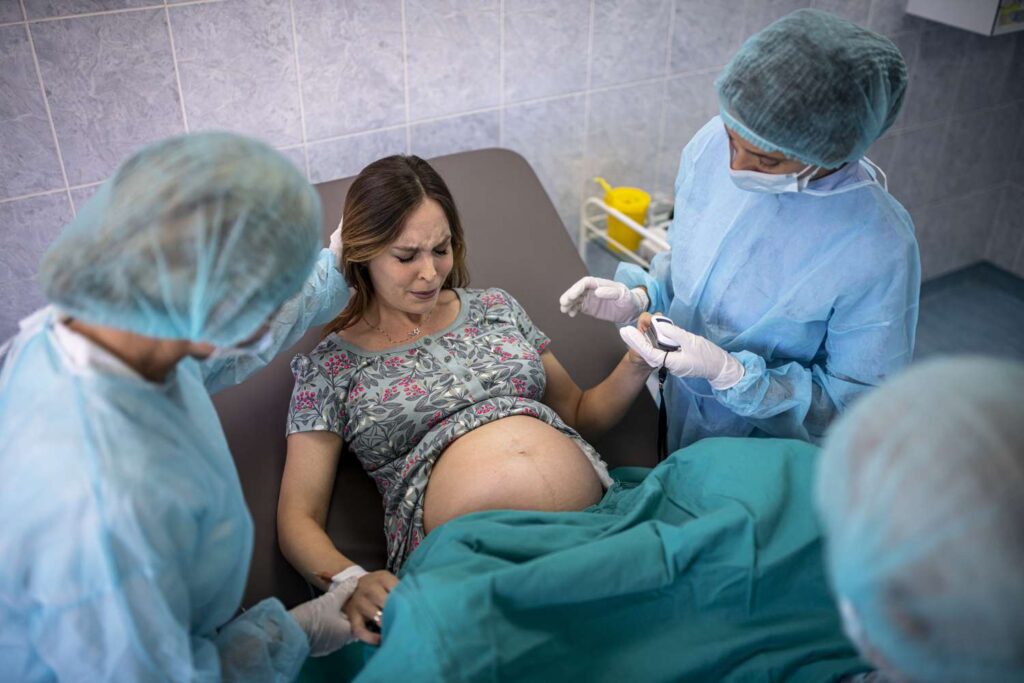Delivery (Normal or Cesarean)
The experience of bringing a new life into the world is powerful and life-changing. The experience of giving birth is full of anticipation, excitement, and a hint of uncertainty, regardless of whether this is your first kid or you are expanding your family.
Selecting between a vaginal delivery and a cesarean section is one of the most important choices you will have to make. We’ll go into the specifics of both delivery methods in this article, covering the advantages, drawbacks, and factors to help you make an informed decision.
What is Normal Delivery?
The normal process of giving birth through the vaginal canal is referred to as vaginal birth or normal delivery. This is the most popular delivery method, and it has been used for ages.
Advantages of Normal Delivery
Furthermore, exposing the newborn via vaginal delivery to advantageous bacteria helps strengthen their immune system.

Challenges of Normal Delivery
Pain and Discomfort: Giving birth may be a taxing and painful experience. Although there are solutions for managing pain, like epidurals, not all discomfort may be eliminated.
Unpredictability: The length and intensity of labour might vary greatly. While some labourers proceed rapidly, others may take longer resulting in tension and exhaustion.
Possibility of Complications: Fetal distress, protracted labour, or problems with the baby’s positioning could occur in some circumstances and require an emergency cesarean section.
What is a Cesarean Section?
A cesarean section, sometimes known as a C-section, is a medical procedure in which the mother’s abdomen and uterus are cut open to deliver the baby. C-sections can be scheduled ahead of time or done on the spot if labour becomes difficult.
Types of Cesarean Sections
Usually, the process takes about 3-4 weeks. From physical examination to ovary stimulation and collection around 9-10 days and fertilisation around 4-6 days and uterus transfer.
- Planned C-Section: For either personal or medical reasons, a planned cesarean is arranged ahead of time. A breech presentation (baby positioned feet-first), numerous pregnancies (twins or more), or a history of C-sections are examples of medical reasons.
- Emergency C-Section: When unanticipated problems during labour occur, such as fetal distress, placental problems, or halted labour, an emergency cesarean is carried out.
Advantages of Cesarean Sectio
- Predictability: Parents can plan and avoid the uncertainties of labour by having a planned C-section, which provides a predicted delivery date.
- Lower Risk of Birth Trauma: Cesarean sections can lower the risk of birth trauma for both the mother and the child in cases of high-risk pregnancies or specific medical conditions.
- Timing Control: A C-section may be advised in some circumstances to prevent protracted labour or to treat particular health issues.
Challenges of Cesarean Section
Usually, the process takes about 3-4 weeks. From physical examination to ovary stimulation and collection around 9-10 days and fertilisation around 4-6 days and uterus transfer.
Making an Informed Decision
Deciding to have a cesarean section or a typical delivery is a personal one that you should discuss with your healthcare professional. Here are some things to think about:
1. Medical History
The safest delivery technique for you and your child may depend on your medical history, including any procedures or difficulties from the past.
2. Baby's Health and Position
The ideal delivery technique may be determined in part by the baby's health and position within the womb. For instance, a C-section can be required if the baby is breech or transverse.
3. Your Preferences
It's crucial to consider your preferences and degree of comfort with the various delivery options. To make sure your wishes are honoured, talk to your healthcare practitioner about your birth plan.
4. Risk Factors
Several risk factors, including multiple pregnancy, preeclampsia, and gestational diabetes, may influence the choice. Your medical professional will evaluate these elements and suggest the most secure course of action.
Each woman and her family have their own unique experience giving birth. Making an informed selection that fits your personal preferences and health needs can be facilitated by being aware of the distinctions between a normal delivery and a cesarean section.
The ultimate goal is a safe and healthy delivery for mother and child, regardless of the technique used. Throughout your pregnancy and delivery, don’t forget to ask questions, be upfront with your healthcare provider, and fight for the finest treatment possible.
At Venus IVF, we offer expert fertility treatments for men and women, helping you achieve your dream family.
Contact Info
- +977 976-1682874
- +977 976-1682874
- info@venusivf.com
- Venus Hospital, Second floor- IVF department Mid baneshwor Kathmandu, Nepal
- 12-5 PM : Sunday to Friday (except Saturday)
